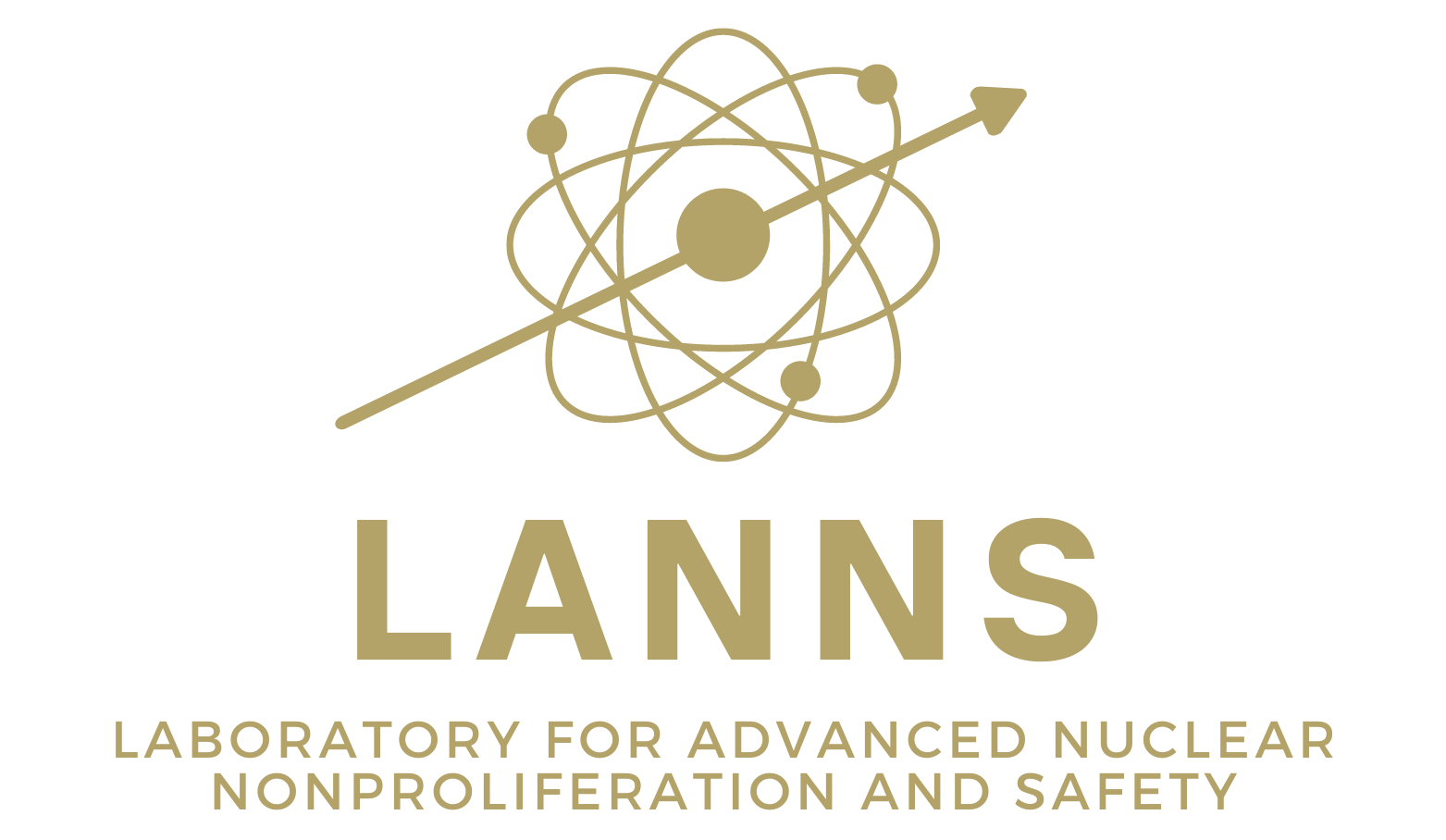Objective
To develop a segmented detector than could be used in the field and facility inspections in order to find fissile material. To experimentally determine a liquid scintillator mixture for safe and practicable use in the field and is efficient in neutron detection. To incorporate sample spectroscopy capabilities into the design.
Summary
A Liquid Scintillation (LS) detector is a detector that analyzes the fluorescence created by radiation interacting with the LS mixture. When a gamma-ray excites a solvent molecule, generally benzene, the π-electrons are excited and transfer their energy to a fluor or scintillation additive.1 The fluor then emits photons which are collected and analyzed. Other dopants, such as boron and gadolinium, may added to the LS mixture to introduce the capability to capture neutrons and create a specific capture signal.2


Photos of LS mixture and the mixture testing flask
Additionally, the hydrogen atoms within aromatic solvents maybe utilized for high-energy neutron discrimination due to elastic scattering and pulse shape discrimination (PSD). PSD is a method of analyzing the timing and energy of a light pulses’ initial rise and its entire pulse. With organic scintillators, gamma rays generate a larger fraction of their scintillation light during the prompt component with induced fast electrons compared to neutrons recoiling protons to create light.
Picture of stillbene detector and PSD plot of PuBe
A 3D MCNP model was created to compare different detector geometries. Rectangular and cylindrical models were evaluated for gamma ray and neutron detection efficiency. The rectangular model is predicted to have 2% higher average flux and 14% more energy deposition. The significantly great energy deposition is due to the longer average travel path of the rectangular model.
At LANNS two scintillation mixtures are currently being evaluated with light and liquid proof glass flasks. The flasks were custom made to fit PMTs in order for the window to rest on the edge of a liquid sphere. The first mixture consists of the organic solvent Xylene, fluor PPO, and the wavelength MSB. The second mixture consists of Xylene and the fluor POPOP. Both mixtures have demonstrated the ability to identify gamma ray energy peaks after being calibrated with known sources, but greater energy resolution is desired.
Na-22 energy histogram plot of PPO mixture (left) and gamma ray plot of an LAB mixture.1
Normalized gamma ray plots of PPO mixture (left) and POPOP mixture (right).
The project aims to develop a versatile LS mixture for facility inspections and field work in order to prevent proliferation of fissile material. The detection capabilities of solidified mixtures with the use of elastomers and the neutron capabilities of the LS mixtures are being investigated. The organic solvent Linear AlkylBenzene (LAB) is being considered to replace Xylene due to it’s higher flash point of 130 oC.
References
- Knoll, Glenn F. Radiation Detection and Measurement. 3rd ed. New York: Wiley, 2000. Print.
- Zaitseva, Natalia. “Pulse Shape Discrimination with Lithium-containing Organic Scintillators.” Pulse Shape Discrimination with Lithium-containing Organic Scintillators. N.p., 22 Aug. 2013. Web. 21 July 2015.
- Bentoumi, G., X. Dai, H. Fritzsche, G. Jonkmans, L. Li, G. Marleau, and B. Sur. “Characterization of a Liquid Scintillator Based on Linear Alkyl Benzene for Neutron Detection.” Nuclear Instruments and Methods in Physics Research Section A: Accelerators, Spectrometers, Detectors and Associated Equipment 701 (2013): 221-24.






